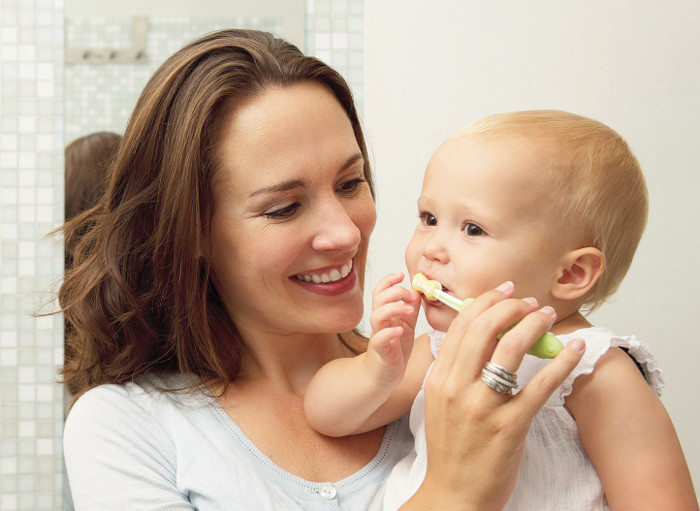Babies do not usually have any visible teeth until around four to six months of age, when teeth begin to push through the gums. Infants go on to develop 20 primary teeth, also known as milk or baby teeth. These are later replaced by 32 permanent teeth that should last for the rest of our lives. Teeth are similar to trees €“ there is the visible part above the surface of the gumline (the 'crown') and there is the important root system that extends into the gums and down into the jawbone.

Teeth should be brushed as soon as the first milk tooth appears
Teeth have a number of layers. The outer layer is an extremely hard material called enamel that contains the dentine layer, which is a softer tissue. At the centre of the tooth is the pulp, which contains blood vessels and nerves. Our teeth are surrounded by our gums (gingiva).
The gums lie over the bones of the jaw and fit snugly around the neck of the teeth. Beneath the surface of the gums is a system of ligaments that anchor the teeth into sockets in the jawbone. In order to have good oral health, teeth must be kept clean and free from decay. Gums also need to be healthy.
